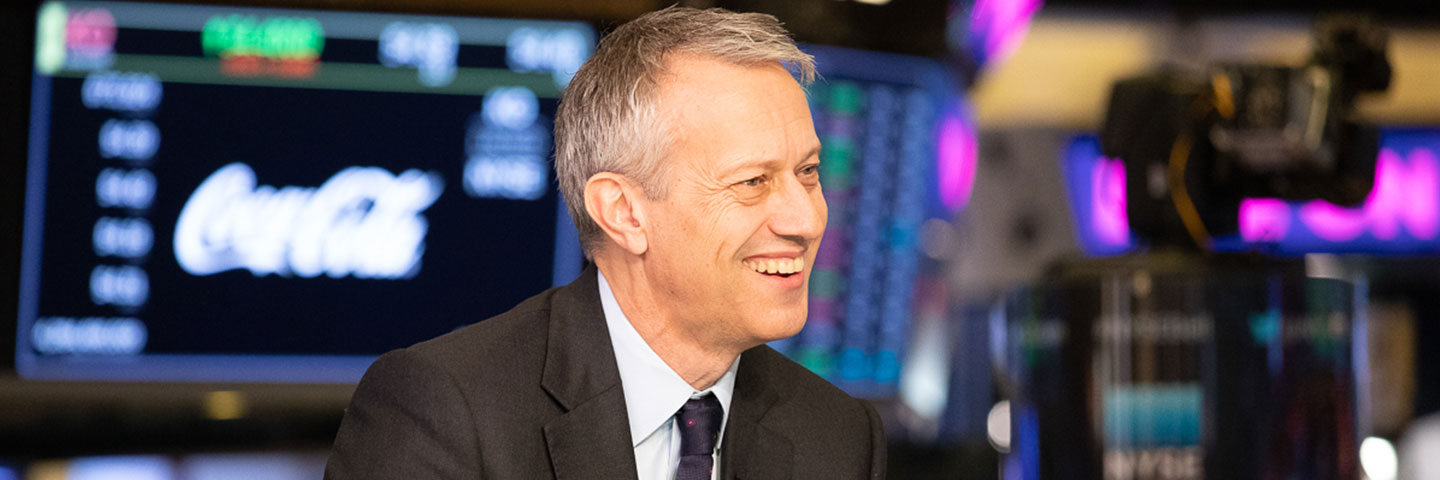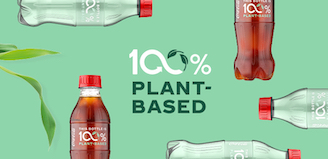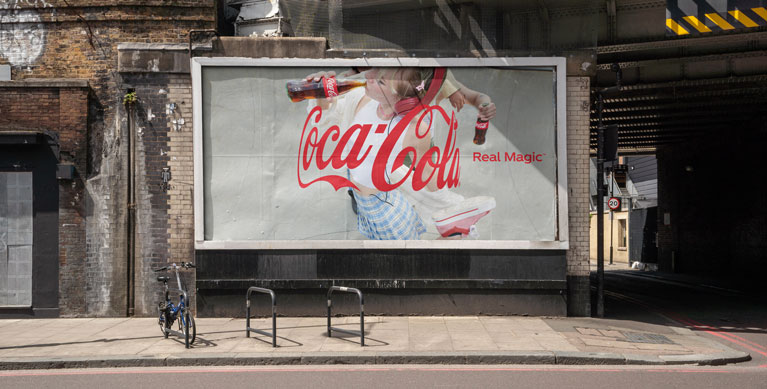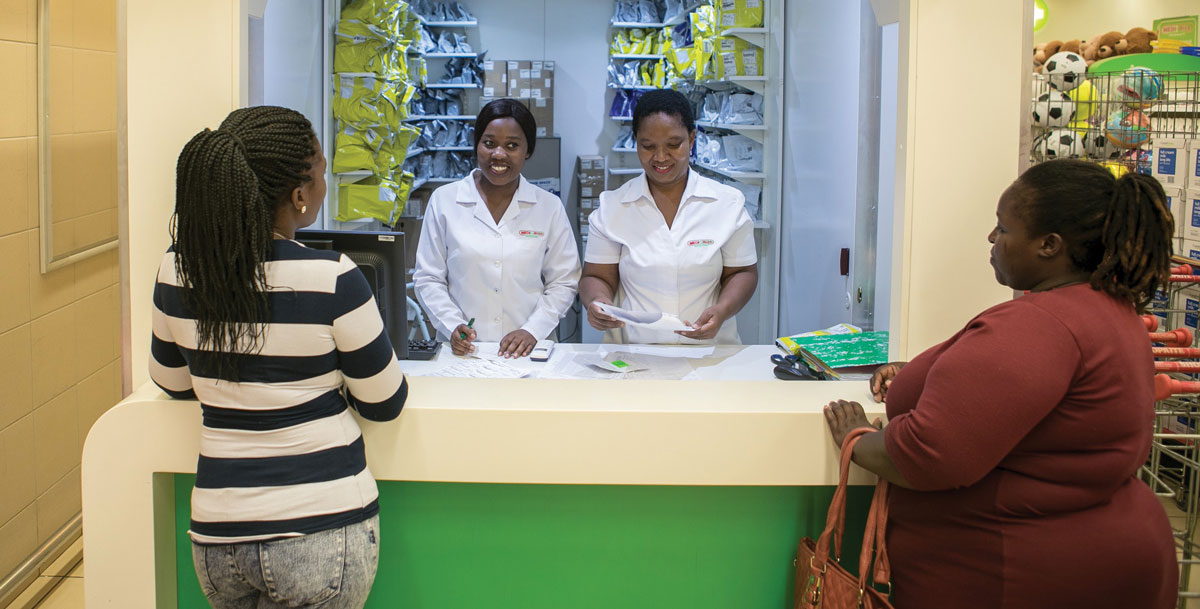
Coca‑Cola CEO to Investors: ‘With a Growth Mindset... We Can Drive our Business Forward’
02-21-2020
A purpose-driven business strategy, category-leading brands and innovative approaches to marketing, commercial execution and more fueled The Coca‑Cola Company’s strong 2019 results and will pave the way for greater growth in 2020 and beyond, Chairman and CEO James Quincey said today at the Consumer Analyst Group of New York (CAGNY) Conference.
“We know where we’re going,” Quincey said. “We’ve got a big future and the platform to get it done. We’re starting to get momentum behind the Coca‑Cola business.”
Here are key takeaways from the presentation, which included remarks from Chief Financial Officer John Murphy:
Coca‑Cola is a growing business in a growing industry.
Quincey sees “huge opportunity” for the company to continue to gain share across all beverage categories and markets in the developed and developing world. A broad portfolio of brands – supported by an unparalleled distribution system, innovative equipment platforms and diverse customer base – gives Coca‑Cola a competitive advantage in the $1.6 trillion non-alcoholic beverage industry.
A refreshed purpose is galvanizing and inspiring Coca‑Cola employees.
Over the last year, Coca‑Cola leadership has worked to develop a new purpose and vision statement. “We’ve reclarified the implicit and made it explicit,” Quincey said.
It’s starting to pay off. “Purpose translates into value,” Murphy said. “We've heard from many of our investors that purpose is, in fact, the engine of long-term profitability….and we believe high performance is the fuel for an enduring purpose.”
A growth mindset is driving the company’s business.
“What will keep us progressing and advancing our strategies is a growth mindset,” Quincey said. “It’s about being feeling curious about what's going on in the world to discover new things, to understand the consumer and the customer, and then be empowered. With a growth mindset, I truly think we can drive our business forward.”
Coca‑Cola is building loved brands by mastering the basics and looking to the future.
Building brands focuses on consumer-centric marketing, innovation and creative revenue growth management (RGM) approaches that bring value to consumers and customers.
“One of the great dangers of being a large institution is you start to get internally focused on what you do or have rather than where the consumer is,” Quincey said. “It's about continuing to be great at the basics – how does the package and pricing architecture boil down to how many drinkers are in the franchise at least once a week? But the basics won't take us into the future on their own.”
Smart marketing is about much more than ads and apps.
Coca‑Cola is engaging consumers in new ways – from light-up Star Wars labeling in Singapore that becomes a virtual lightsaber once touched, to fresh approaches to point-of-sale merchandising in Mexico, to the hit music asset Coke Studio in India and beyond. “We’re making a clear shift, in simplest terms, from interruptions to experiences through many different vehicles,” Quincey said.

Coca‑Cola is taking a more disciplined approach to innovation.
The company is revamping its innovation metrics and routines, driven by consumer trends of today and tomorrow. “We need innovation for next year but also to research things that will work in five to 10 years’ time,” Quincey said. “And we need to do innovation in sparkling beverage categories we know but also in categories where we aren't necessarily as accustomed to bringing new things to the marketplace.”
Markets are intentionally eliminating “zombie” projects – failed innovations that clog up the pipeline – and including bottlers and customers earlier in the R&D cycle.
“The result has been a good increase in gross profit derived from innovation over the last few years,” Quincey said. He highlighted a few priority 2020 launches, including POWERADE ULTRA, AHA and smartwater flavors in the United States. “We're starting to see the business benefit from information flowing through.”
Revenue Growth Management (RGM) 2.0 is driving value for customers and bottlers.
A renewed focus on commercial execution – on strategically tailoring price/pack offerings by channel and outlet – is delivering growth for the newly refranchised North American bottling system. Quincey also shared an example from Europe. “When you get the brands, the innovation, the RGM and the execution, great things happen not just for the consumer, but for the customer,” Quincey said.
‘We want a business that can grow, while generating zero waste and having a lower carbon footprint.’
The company’s position on plastics is straightforward, Quincey said. “The objective on plastic is not a religious debate about plastics yes-or-no,” he said. “It's about understanding what we want in the world. And what we want is a business that can grow while generating zero waste and having a lower carbon footprint.”
The company is pursuing different strategies for high-value, mid-value and low-value plastics. For example, Sweden will become the first country in the world where all Coca‑Cola PET bottles made in-country are 100% recycled PET. “Proving that not only can you get to zero waste, but that you can get to a fully circular economy,” Quincey said.
COVID-19 will impact the company’s first quarter 2020 results.
While the impact of the coronavirus outbreak continues to evolve, the company currently estimates an approximate 2- to 3-point impact to unit case volume, 1- to 2-point impact to organic revenue and 1- to 2-penny impact to earnings per share for the first quarter of 2020. The company is carefully following government guidelines and taking precautionary steps to help prevent the further spread of the virus. Coca‑Cola also is donating to organizations working diligently to support patients and contain the virus. implemented precautionary measures to protect employees in China, its third-largest market by unit case volume.


